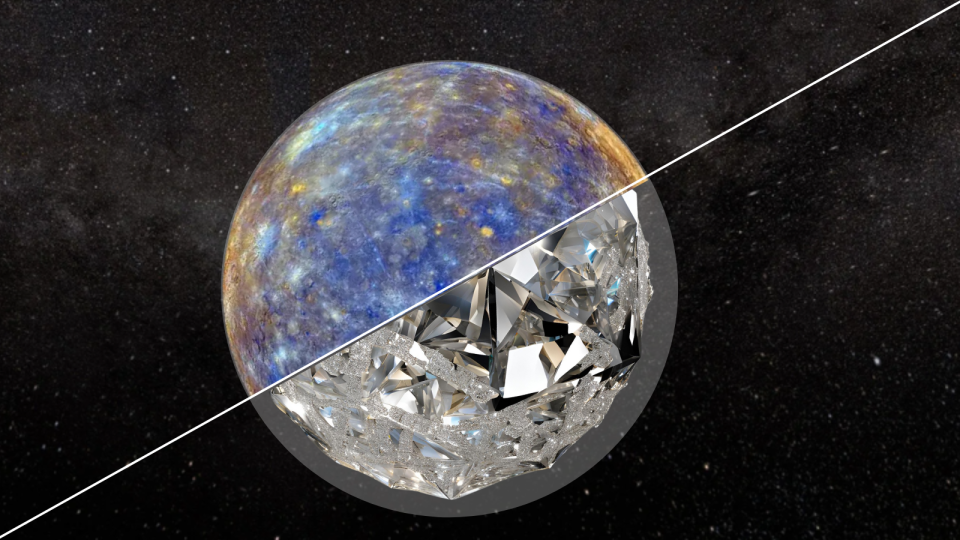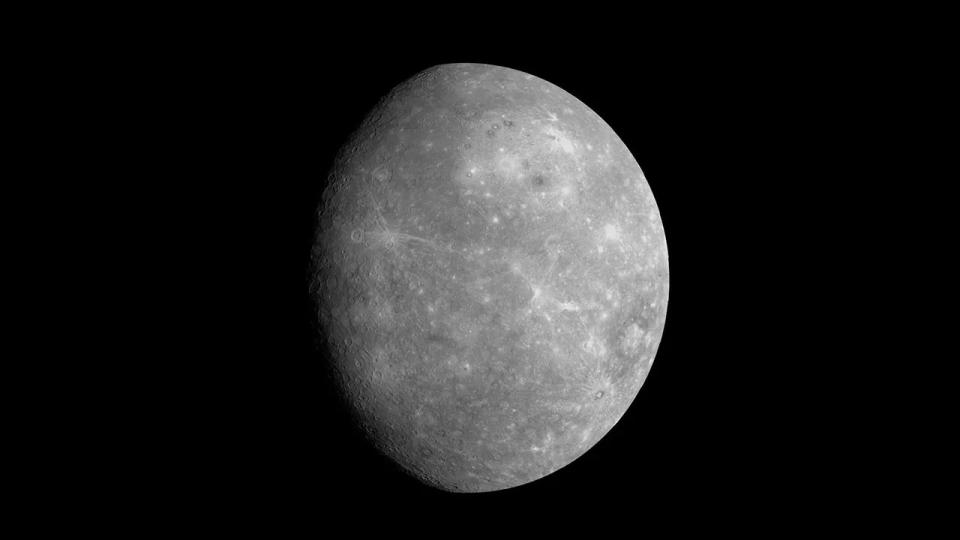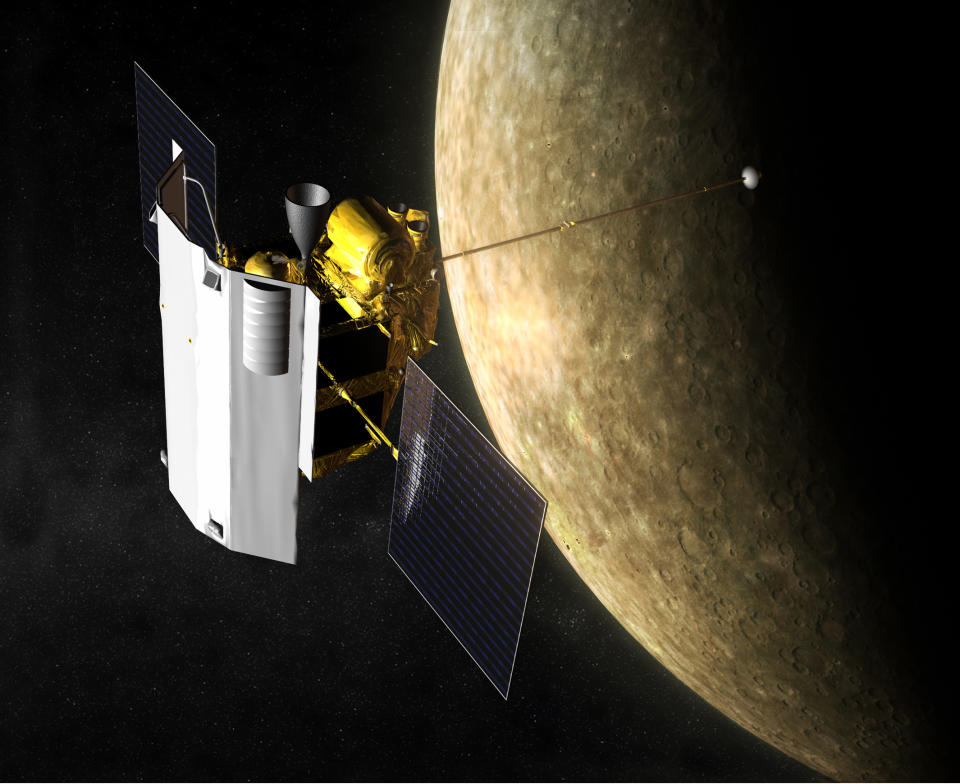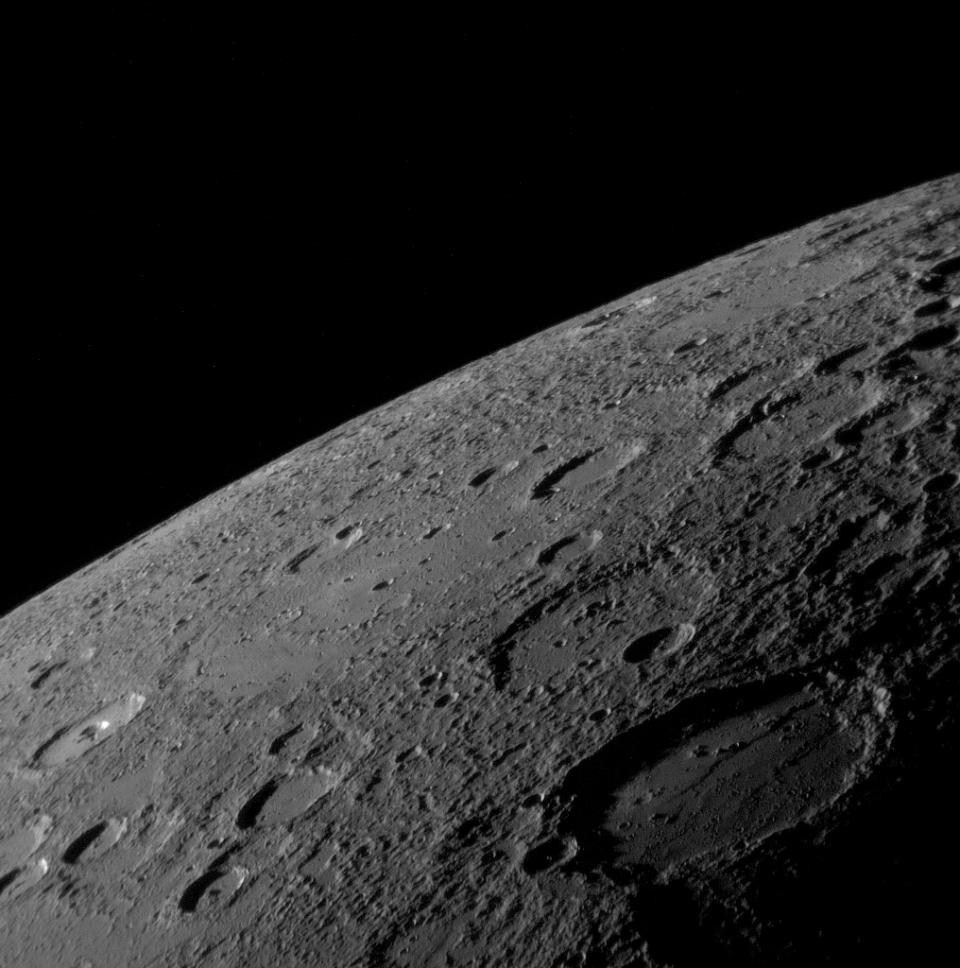When you buy through links in our articles, Future and its syndication partners may earn commission.

The solar system’s smallest planet may be hiding a big secret. Using data from NASA’s MESSENGER spacecraft, scientists have determined that Mercury, the planet closest to the sun, may have a diamond mantle as thick as 10 miles beneath its crust.
Mercury has long puzzled scientists because it has several characteristics not common to other solar system planets, including its very dark surface, its remarkably dense core, and the early end of Mercury’s volcanic age.
Also among these puzzles are patches of graphite, a type of carbon (or “allotrope”), on the surface of the solar system’s innermost planet. These patches have led scientists to suggest that in Mercury’s early history, the tiny planet had a carbon-rich magma ocean. This ocean may have risen to the surface, creating the graphite patches and the dark shadowy tone of Mercury’s surface.
The same process may have also led to the formation of a carbon-rich mantle beneath the surface. The team behind these findings think that this mantle is not graphene, as previously suspected, but instead consists of a much more valuable allotrope of carbon: diamond.
“Given the new estimate of the pressure at the mantle-core boundary and the fact that Mercury is a carbon-rich planet, we calculate that the carbon-bearing mineral that will form at the interface between the mantle and the core will be diamond, not graphite,” team member Olivier Namur, associate professor at KU Leuven, told Space.com. “Our study uses geophysical data collected by the NASA MESSENGER spacecraft.”
MESSENGER (Mercury Surface, Space Environment, Geochemistry and Ranging) was launched in August 2004 and became the first spacecraft to orbit Mercury. The mission, which concluded in 2015, mapped the entire tiny world, discovered abundant water ice in the polar shadows, and collected important data on Mercury’s geology and magnetic field.
Relating toMercury has been shrinking for at least 3 billion years and may be shrinking today


Under pressure!
This new study also ties into a big surprise that came a few years ago when scientists reassessed the mass distribution on Mercury; they discovered that the small planet’s mantle was thicker than previously thought.
“We immediately thought that this should have a big impact on speciation [the distribution of an element or an allotrope amongst chemical species in a system] “There are different compositions of carbon, diamond and graphite on Mercury,” Namur said.


The team investigated this on Earth using a large-volume press to mimic the pressures and temperatures found in Mercury’s interior. They applied an incredible amount of pressure—over seven gigapascals—to a synthetic silicate that acts as a proxy for the material found in Mercury’s mantle, reaching temperatures of up to 3,950 degrees Fahrenheit (2,177 degrees Celsius).
This allowed them to study how minerals that might have been present in Mercury’s early mantle changed under these conditions. They also used computer modeling to evaluate data about Mercury’s interior, which gave them clues about how Mercury’s diamond mantle might have formed.
“We believe that diamonds could have formed by two processes. The first is crystallization of the magma ocean, but this process probably contributed to the formation of only a very thin layer of diamond at the core/mantle interface,” Namur explained. “The second, and most important, is crystallization of Mercury’s metal core.”
When Mercury formed about 4.5 billion years ago, the planet’s core was entirely liquid, Namur said, and gradually crystallized over time. The exact nature of the solid phases that formed in the inner core is not currently well known, but the team believes they must have been low-carbon or “carbon-poor.”
“The liquid core before crystallization contained some carbon; so crystallization leads to carbon enrichment in the remaining melt,” he continued. “At some point, a solubility threshold is reached, meaning the liquid can no longer dissolve carbon, and diamond forms.”
Diamond is a dense mineral, but not as dense as a metal, so during this process it floated to the top of the core and came to rest at the boundary of Mercury’s core and mantle. This resulted in the formation of a diamond layer about 0.62 miles (1 km) thick, which then continued to grow over time.


The discovery reveals differences between the birth of the planet closest to the Sun and the creation of the other rocky planets in the Solar System: Venus, Earth and Mars.
“Mercury likely formed much closer to the sun from a carbon-rich dust cloud. As a result, Mercury contains less oxygen and more carbon than the other planets, leading to the formation of a diamond layer,” Namur added. “However, the Earth’s core also contains carbon, and diamond formation in the Earth’s core has already been suggested by several researchers.”
The researcher hopes the discovery could help unlock clues to other mysteries surrounding the Solar System’s smallest planet, including why its volcanic phase was cut short around 3.5 billion years ago.
“The most important question I have about the evolution of Mercury is why the main phase of volcanism lasted only a few hundred million years, much shorter than on other rocky planets. This must mean that the planet cooled very quickly,” Namur said. “This is partly to do with the planet’s small size, but we are currently working with physicists to understand whether a diamond layer contributed to very rapid heat removal and therefore ended the major volcanism very early.”
RELATED STORIES:
— Why is Mercury so weird? The giant outer planets are to blame.
— European probe captures stunning close-up images of planet Mercury during brief flyby (video, photos)
— See Mercury’s giant, comet-like tail pass close to the Sun in stunning new image
The team’s next step will be to investigate the thermal effects of a diamond layer at the mantle/core boundary, Namur said. That work could be supplemented by data from a mission that follows MESSENGER.
“We look forward to the first data collected by BepiColombo, hopefully in 2026, which will help clarify our understanding of Mercury’s interior structure and evolution,” Namur concluded.
The team’s research was published in the journal Nature Communications.